What's New in Architecture - Automation, Coding, and BIM!

Table of Contents
Meet the Panellist: Giuseppe Dotto
Giuseppe Dotto is an Italian architect based in Amsterdam. He has a double Masters in Architecture from Catholic University of Parana in Brazil and the University of Ferrara in Italy. He is passionate about finding new ways to enhance the AEC Industry by harnessing the power of computation, programming, and upcoming technologies. He has collaborated with firms like OMA and UNStudio as a Computational Designer and BIM Coordinator respectively, in projects like the Feyenoord Stadium, Rotterdam, Netherlands.
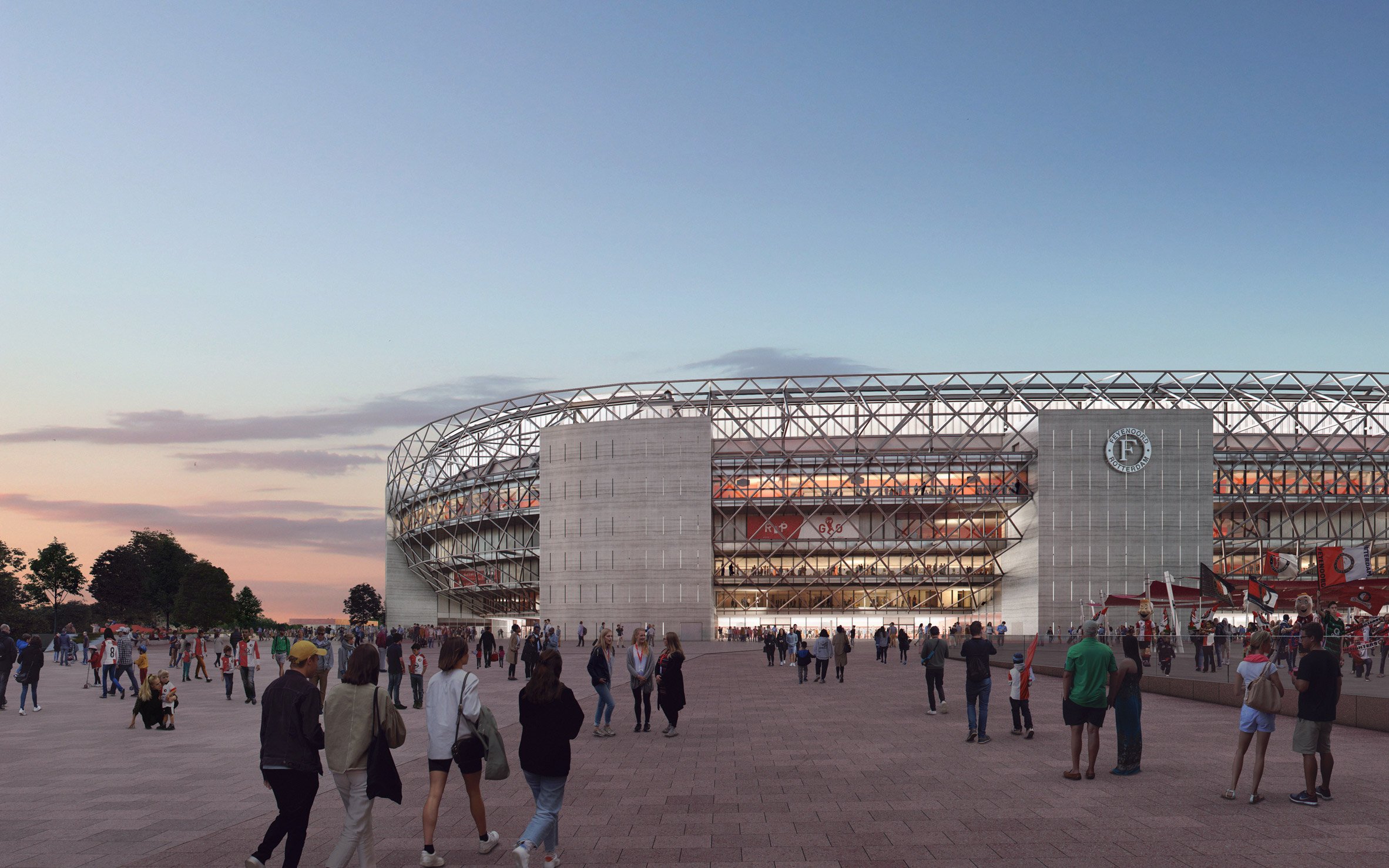
‘Feyenoord Stadium, Rotterdam, Netherlands’ by OMA
The stadium, which is home to the Feyenoord Football Club, was made possible by incorporating generative design to meet their objectives. Giuseppe was an important part of this process as he helped the design team develop the mindset required to tackle the generative design workflow. The end result was a one-of-a-kind project that serves as a blueprint for the successful application of generative design in architecture and future projects of OMA.
He also was a part of another project, which is the KaDeWe Department Store in Vienna, Austria.
‘KaDeWe Department Store in Vienna, Austria’ by OMA
‘KaDeWe Department Store in Vienna, Austria’ by OMA
The KaDeWe Department Store has a facade inspired by the Vienna Secession. This department store is made up of two main volumes that are connected by a green buffer zone that serves as a passageway to the area’s pedestrian network, bringing new roof-gardens and more public spaces to the historical centre.
His professional experience doesn't stop here. He also is the Founder of Macro4BIM. It is an organisation that aims to create tools to help the work of architects become more efficient and intelligent by making use of the potential of programming for the construction industry.
Let’s talk Experience
Q. Can you share a bit about your first architecture job and how you managed the first challenge of taking on this endeavour?
I started my first job in architecture in 2014 while still studying for my Masters at University. Interestingly enough, my first job was teaching Revit. I consider this as my first job because it gave me the possibility to understand the fact that as architects, we need to make strong use of computers. Just by knowing a tool, we can somehow find a path and a career.
Thanks to this job, I ended up doing so well with this tool that I was able to take on other challenges. After graduation, it enabled me to make leaps over time in different companies where the application of Revit was done for practical matters and real deliverables. I've been lucky since the very early stages to have had opportunities to work with offices that were embracing BIM. But in general, we're making BIM deliverables as part of their approach to architecture.
I'd say that by teaching the tools and then applying all the technical knowledge I knew, both in terms of practical and architectural knowledge, is how I started. It was already clear to me back then that my career would be more towards a technical field, where the strong use of digital tools would be important.
Q. You seem to be pretty acquainted with BIM already. But for those of us who are new to it, haven't heard much of it, or are still hesitant to get into this sector, can you help us understand what BIM is from your point of view?
Ah, nice! I'm very happy to answer this question, considering that I don't know the people who are listening or what their level of education is with respect to BIM.
BIM is an acronym for ‘Building Information Modeling’. It is the approach that enables architects to convey their data and knowledge, not through drawings and sketches, but through models. So, BIM is the transposition of everything that was classically represented in our industry with sketches into a digital scenario.
I'd like to quote some research about BIM from the UK that I'm reading. It describes BIM as the vital connection that permits the digitalization of the construction industry. This is how I would represent BIM.
Q. There's still a lot of misinformation around the subject of BIM. In your case specifically, how did you come to be acquainted with BIM? Did you have a former education on the subject or was it something that you were finding your way around?
Back then, there was not a proper formal education, at least in Italy. The first approach to my career was teaching a BIM software - Revit. It helped me. I was introduced to BIM during my university period, but the approach was mostly towards technical architectural drawings. Everyone was amazed by the fact that with BIM, you can make a plan, and the software automatically makes sections and elevations.
So, I approached BIM mostly from a software point of view. That was about 10 years ago. Nowadays, it is, of course, a totally different panorama. Now, I'm at the forefront of mentoring and sharing knowledge about BIM, which is much more accessible.
Computational Design in real life
Q. Talking specifically about software, computation, and programming, at what point did you decide to start pursuing the field of Computational Design? What, from the early beginnings of your career, influenced your decision to jump into Computational Design?
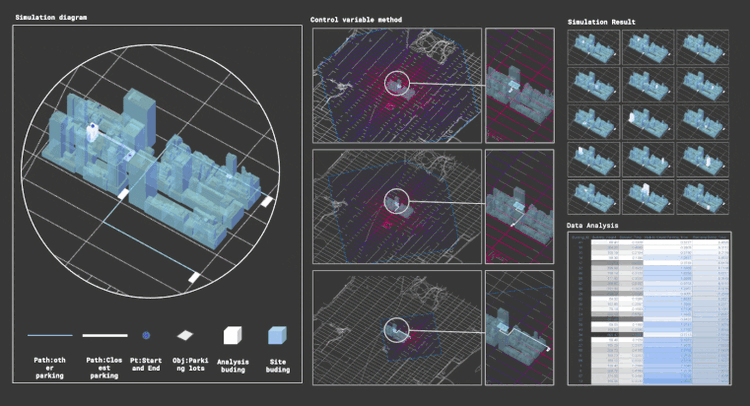
Junling Zhuang’s summer project – Computational Modelling.
I don't think it was much of a leap for me to become interested in Computational Design. Initially, I thought it was mainly concerned with geometry finding or the ability to represent something that would have been manually unachievable. With this curiosity in mind, I kept studying what I thought was Computational Design. Although I wasn't sure what it was, I was amazed by all the impressive projects I was seeing.
One day, when I was studying in Brazil, my friend Fabiano Friedrich, who used to be an architect at Zaha Hadid Architects, explained his perspective on the field. His suggestion was not to approach it as a new software to learn. For example, I was proficient in using Revit and was just looking for another software to master in Computational Design.
Fabiano explained that Computational Design is not about mastering a particular software, but rather an approach or a way of thinking. Most of us have probably heard of the famous terms "Computational thinking" and "Computational thinkers." This realization helped me understand that Computational Design was just a way of thinking.
So, I started studying Python on my own. It was a programming language that helped establish a dialogue between me and the computer.
When I discovered that BIM could connect architectural work with Computational work, I realized that I could become a Computational Designer. This is why I say there was no great leap. You can think of me as an architect by education who found Computation as my main passion that gave me the possibility of approaching the role of an architect with different tools.
Finally, I ended up at OMA as a Computational Design Specialist. So, yes, this is my transition. I like to say that I am an architect by education with a Computational Thinking attitude.
Computational Design is not about mastering a particular software, but rather an approach or a way of thinking. Most of us have probably heard of the famous terms "Computational thinking" and "Computational thinkers." This realization helped me understand that Computational Design was just a way of thinking.
Q. You have been part of some of the biggest Architecture Firms in the world like UNStudio and OMA. Based on your experience, can you tell us why firms are adopting Computational Design presently?
.jpg?width=2000&height=1333&name=evabloem_mercedes_benz_museum_unstudio_0240.jpg(mediaclass-masthead-image.4e1a49d738a19641358911833dfb355bf10d147f).jpg)
Mercedes Benz Museum - Project by UNStudio
Based on my experience, I will try to provide an answer. Large companies recognize the returns on their investment in BIM projects and deliverables. Digitalization in the construction industry is growing globally and is expected to continue. In fact, it is estimated that within ten years, the architecture and construction industry will be fully digitalized. AEC firms that adopt BIM recognize the value of investing in this software.
One reason to adopt BIM is the enhanced control it provides architects, engineers, and contractors over the project. BIM also helps with cross-checking between different industries and collaboration between different disciplines, making it a valuable tool regardless of practice scale.
Another reason is time. Proper adoption of BIM solutions helps reduce production time, although the actual impact depends on various factors, such as project stages and colleagues.
In my opinion, adopting BIM is an investment, especially as architectural practices are still in a transitional phase. It is common to encounter hesitation in moving towards BIM, but in the long run, the investment is likely to provide good returns. BIM is a long-term investment that I would recommend everyone to consider. In fact, it may already be late to start.
Want to know more about the benefits of BIM? Check out: How Does BIM Benefit the Architecture, Engineering & Construction (AEC) Industry?
Q. Reeling it back to Computational Design, I guess it would be something similar, right? The benefits and the attraction towards Computational Design would also reflect time, design, creativity, etc. In your experience, has this been the driving factor for companies to delve into Computational Design?
Yes, for sure! This is the driving factor for adopting Computational Design. I am referring to my career and experience when I say that Computational Design enhances the quality of work. This is not to say that quality cannot be achieved without Computational Design.
It is common for architects to eventually want to stretch the capabilities of the software they are working with and extend the tools available to them. This is one of the first points mentioned in a job description for a Computational Design role - to extend the capabilities beyond the normal level of any software. This is important, as extending the capabilities generally results in higher-quality production, results, and projects.
Companies invest in Computational Design to enhance their quality and save time.
Applications
Q. Another field that architects have not been familiar with is Programming. We're seeing this wave of people wanting to get into tech jobs, delving more into programming and coding. So, as an architect who is familiar with this, can you tell us exactly how including this skill could be beneficial to those of us who are still not aware of its importance?
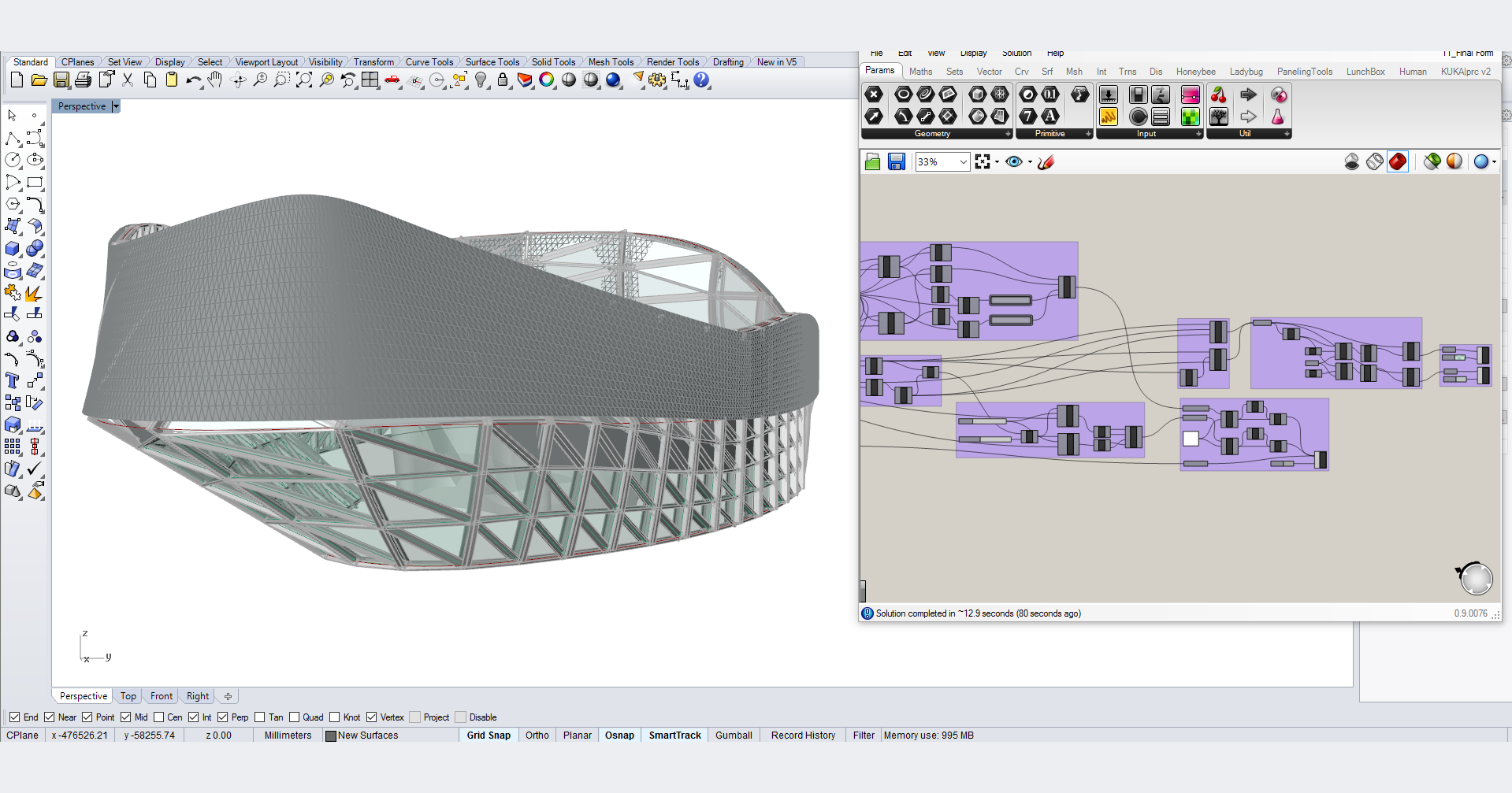
On a basic level, programming can benefit architects by enhancing the quality and repetition of their work.
Computational design allows architects to iterate repetitive tasks that would otherwise need to be done manually. For example, architects, product designers, and engineers often stick to a specific naming convention or have to ensure the quality of their project drawings. These are just repetitive tasks that an intern can perform over and over. However, with computational design, these tasks can be taught to a computer, which can then repeat them automatically.
To quote my math professor, Roberto Cagnacci, from 15 years ago, "The computer is the fastest of the stupid." At that time, we all made fun of this quote. However, it highlights the fact that computers are extremely good at performing repetitive tasks quickly and accurately.
I can give another example. I once worked with a mechanical engineering company that relied heavily on manual computations and calculations. They used BIM to create schedules for controlling all of their parameters. However, they suddenly had to export all of these schedules into another software, Excel. There were hundreds of schedules in Revit, and I was able to export them using my programming skills, despite having no knowledge of mechanical engineering.
Another example. As designers, we often want to optimize the panelization of a facade to make it cost-effective. Computational design can help us achieve this by defining constraints and using programming language to apply our ideas. For example, we can move some points over the facade to make sure all the panels are the same, which saves costs and makes clients happy. This is just one of the many good ways computational design can be applied.
Q. What are some of the software and tools that you use regularly in order to deliver these types of projects and tackle these design challenges?
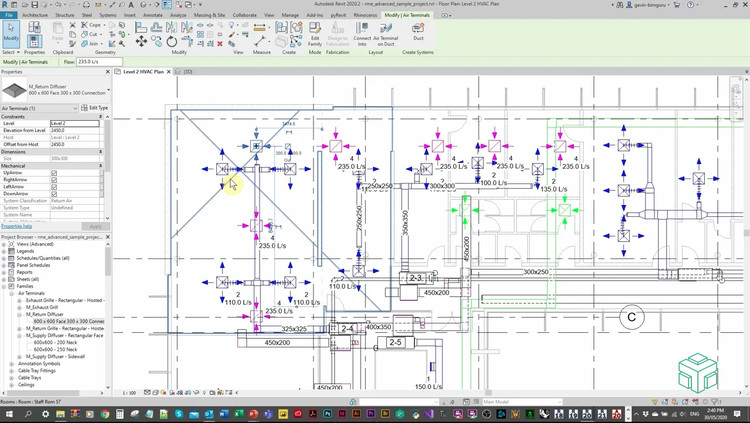
It may seem like an advertisement, but it's not. I work with BIM software, which generates an IFC file, an open format that allows everyone to work on it. Personally, I've always used Autodesk Revit, which comes with packages like Dynamo. Dynamo is a visual programming interface for Revit that allows you to define geometry and organize data. These are the two most commonly used software that I work with.
Recently, I worked on a project where all the different consultants were using different software, but we managed to combine them.
As a Computational Designer, I mainly use Python, which is a computer language, for Computational BIM design or Computational Science projects. Therefore, my preference is towards Revit and the use of Dynamo and Python.
Q. Let's talk about your experience and the projects that you've been able to deal with. Can you take us through a project of yours that you're really proud of? Do you remember the challenges and the learnings that you had from it? How was Computational Design and BIM applied to it?
This is an interesting question, and while there are many projects I would love to discuss, I must note that I cannot disclose certain projects due to confidentiality agreements with my employers.
However, I am happy to discuss the Feyenoord Stadium and KaDeWe Department Store projects, both of which I contribute to during my time at OMA. I am no longer working with them in Rotterdam, but I am currently working on a fascinating project with UNstudio that is nearly complete to DD, which also utilized a rich BIM setting. Unfortunately, I cannot disclose further information at this time.
Feyenoord Stadium
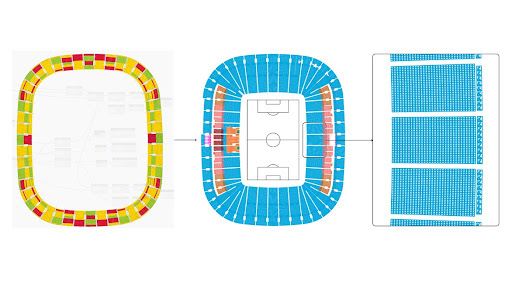
The Feyenoord Stadium project utilized Computational BIM solutions extensively, particularly in regards to seating distribution. We also utilized a generative design approach, leveraging Rhino and Grasshopper software to extract data and increase seating capacity by over 4%. This was a significant increase, given that the stadium can hold over 60,000 seating chairs.
KaDeWe Department Store
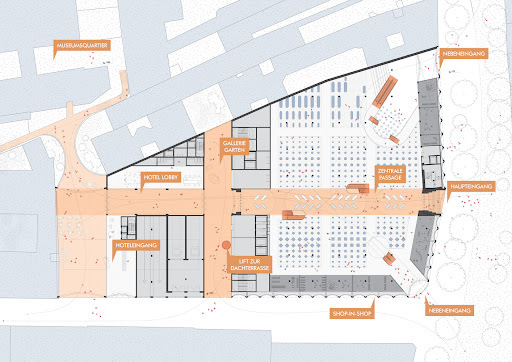
The project involved a fascinating curved glass facade solution that was developed using Computation. For the 2D drawing aspect of the project, we used Computational Solutions for tasks such as floor plan annotation, elevation representation, and graphics. Additionally, a strong Computational Solution was used to handle the special glazed facade.
Finally, I must commend the teams that I had the pleasure of working with on both the Feyenoord Stadium and KaDeWe Department Store projects. The enthusiasm, creativity, and dedication that they brought to these projects was truly inspiring, and I feel privileged to have been a part of such an innovative and dynamic team. Working on these projects allowed me to gain a deeper understanding of the power and potential of Computational Design and BIM, and I look forward to continuing to explore and push the boundaries of these exciting fields in the future.
Career Opportunities
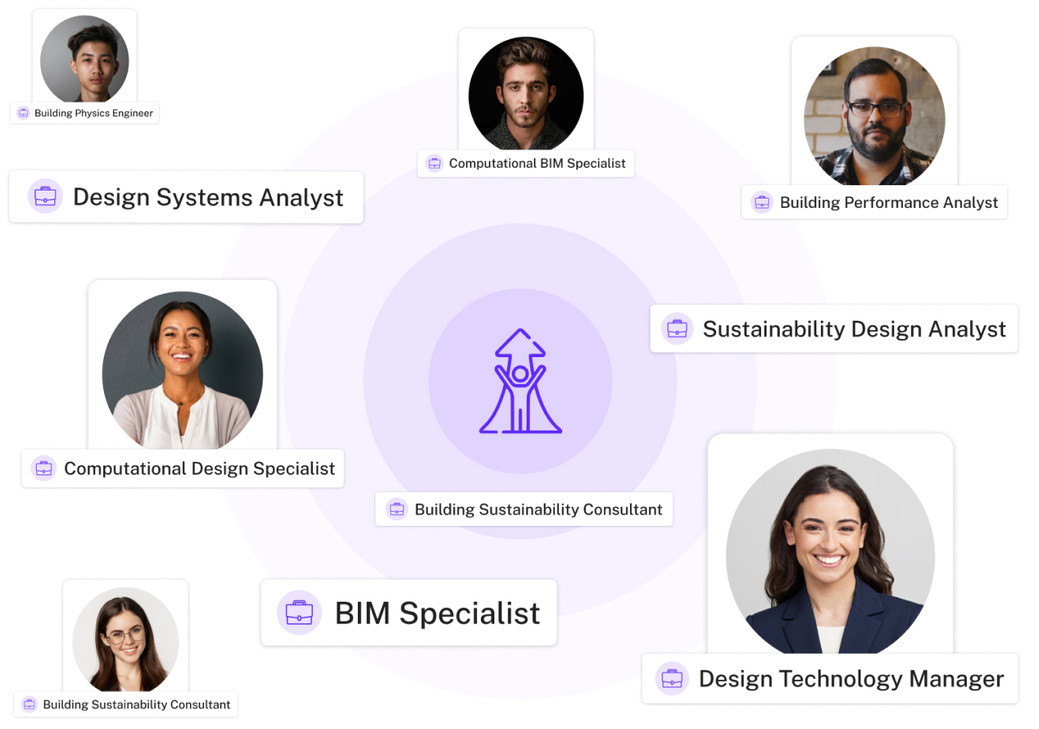
Q. Can you give us a rundown of what a Computational BIM Specialist does?
In the field of architecture, a Computational BIM Specialist approaches a problem, understands it, finds the key point of the issue, and then solves it by applying a Computational Solution. So, a Computational BIM Designer analyzes a problem and solves it by applying Computational Science. This is similar to what an architect does, but architects do not solve problems in a computational way.
As mentioned earlier, BIM serves as the gateway for the digitalization of the construction industry.
Q. From a career perspective, how would you differentiate between the roles of an Architect and a Computational Designer?
As an architect by education and a Computational Designer by passion, I find it challenging to distinguish between the two roles. However, I would say that a Computational Designer is more interested in software implementation. Although both architects and Computational Designers conduct analysis and develop solutions, the latter employs Computational Solutions, which involves extensive research and software implementation.
Q. You are also joining us at Novatr as a mentor at the Computational BIM elective of the Master Computational Design Course. You have been an integral part of the development of this course. What can the students that might be interested in delving into this career path expect to learn from you?
I am excited to teach students how to communicate with computers and make their work approach more challenging. By the end of the course, I expect students to be able to interact with computers and understand how to make the most out of them in their work.
Q. What is a piece of advice that you would give to the young professionals who are interested in learning Computational Design?
My advice to young professionals is to focus on understanding tools rather than just becoming proficient in them. As a Computational Designer, it is more important to know how a tool works than how to work with a tool. Additionally, studying a programming language such as Python can be highly beneficial for starting a career in this field.
You can learn from Giuseppe Dotto at Novatr's Master Computational Design Course for Real-World Application.
-
Become a Computational Design Specialist in just 8 months of part-time, online study.
-
Learn from industry experts working at top firms like ZHA, Populous, and UNStudio.
-
Master 6+ software, 15+ plugins and industry workflows.
-
Build a core specialisation in High Performance Building Analysis or Computational BIM Workflow
-
Get placement assistance to land jobs in globally operating firms.
Get started with Computational Design today!

 Thanks for connecting!
Thanks for connecting!

-2.png)
-3.png?width=767&height=168&name=MCD%20B%20(Course%20Banner)-3.png)

/827x550/images/blog/blogHero/CG004_SC_WhatABIMSpecialistDoesAndHowToBecomeOne_0122_Image01.jpg)

.png)



